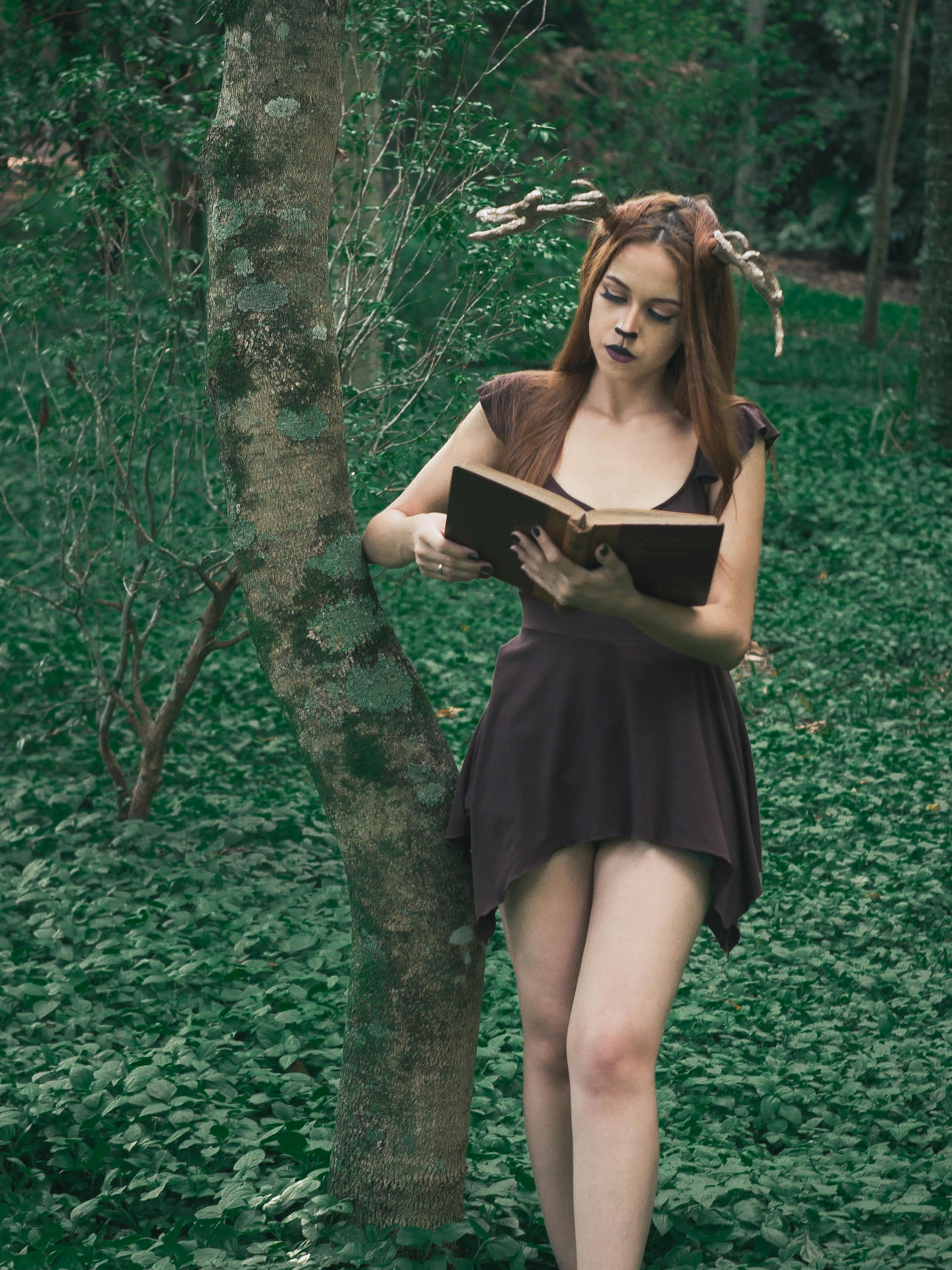How to Write a Fantasy Novel: Opening, Tenses, Progression, OH MY
Bella Rose Emmorey
book editor, rogue behaviorist, digital marketer, writer, brand builder, plant aunt, and cheese enthusiast.
How to Start Writing a Fantasy Novel, Before You Actually Write itIdea generationCharacter creationCrafting the outer plotDetailing the inner plot (character development)World buildingOutliningHow to Write a Fantasy Novel: The Often Neglected Details1. TensePastPresent2. PerspectiveFirst PersonSecond PersonThird Person - LimitedThird Person - CloseOmniscient3. Tone & Style of the Fantasy GenreNarratorNarrative StyleWord Choice & Scene Details4. Opening the Story of Your Fantasy WorldYour opening should always be a scene.5. Chapter Structure in Fantasy NovelsMake sure with any given chapter, that the reader can answer:6. Maintaining ProgressionIt’s the idea of alternating between these:7. The Climax8. The EndNow what?
Most of what you read when learning how to write a fantasy novel has more to do with setting it up than actually writing it. Resources often gloss over important details like which tense to use, what tone will best serve the story, how you should open the book, and even how to progress the story in a way that keeps readers hooked.
We’re not like most resources. We’re a cool resource!
Okay, that’s enough of that. In all seriousness, if you want to know how to prep for a fantasy novel, $ we have that here for you$ . If you’re ready to write the book and want to know what additional steps and considerations to make, stick around.
If you’re brand new to writing fantasy at all, let’s go over a brief of what’s usually involved in the process.

How to Start Writing a Fantasy Novel, Before You Actually Write it
Some people are what we call free-writers (also known as pansters or discovery writers). They often "write by the seat of their pants" and don’t have much of a plan.
But for a fantasy novel, you want to plan at least something. If you’re new to this, the components you’ll likely face when getting ready to learn how to write a fantasy novel will look like these:
Idea generation
Let's start at the very beginning: Your big idea.
If you're gearing up to write a fantasy novel, you've probably been thinking about this for a WHILE. It's time to get those ideas down, fantasy writer!
Idea generation can include any thoughts you have on:
- supernatural elements
- the fictional world and fantasy setting
- character arcs
- fantasy series ideas
- story structure
- flawed heroes
- dynamic villains
- dialogue bits
- scenes you can already see in your head
Keep notes of all of your ideas, goals, and intentions for the book or series.
Character creation
Creating a character involves figuring out their characteristics, their arc, strengths, weaknesses, flaws, favorite dessert--all of it!
Check out these $ three crucial fantasy protagonist characteristics$ if you need help getting into it.
Crafting the outer plot
This is the big chunk of your story structure. Are you going hero's journey, or are you mixing it up?
Weave plot threads together and make them clash with your characters. Build situations to challenge your protagonists. Whip up a few twists and turns!
One thing to keep in mind (that you hopefully already know) is whether this is a standalone or a series. If you're writing a series, you'll need an over-all series arc, plus separate arcs for each book.
You may also begin to develop themes and morals in this step.
Detailing the inner plot (character development)
Writing character development is different than simply designing your characters. You need to know how they will change. What are their wants and needs, and how do their weaknesses hold them back from it? How will their strengths pull them through?
Sometimes writers build a character and plot a book, then try to force them together and it just doesn't work. Consider how your characters will work within that plot. If you don't, the story will passively happen to your character. So when creating plots, consider: What will the characters actively do to push the story forward?
World building
World building is often fantasy writer's favorite part of writing fantasy period. It's your magic system, climate, supernatural elements, regional layout, topography, creatures, laws, $ religions$ --the entire world!
Outlining
The way you outline is fully up to your preference. Every author who writes fantasy novels has their own unique method. Mind mapping, index cards, a complex system of digital files--find a way that works for YOU and your own writing style.
These will bring to the point of being ready to actually start writing, especially if you’re an outliner. If you’re a free-writer, you’ll still plan some details depending on where you fall on the $ outlining vs free-writing spectrum$ .
For more details of the preparation phase, which is incredibly important, read this blog post about $ how to plan a fantasy novel$ .

How to Write a Fantasy Novel: The Often Neglected Details
You sit down to write a fantasy story. You know what’s supposed to happen in the first chapter. But you don’t know how you should write it to convey the feeling you’re going for.
Do you start with dialogue?
Do you give backstory first?
Do you open with a dream sequence?
Do you jump right into a scene?
And what about the tense—past or present? And the narrative style? First or third? Omniscient?
These are the real questions we face as fantasy authors. Learning how to write a fantasy novel isn’t the same as planning it, and it’s different from other genres. So let’s go over these details, all the way from the minute considerations through to writing progression in the story.

1. Tense
While tense can differ by audience age, it’s ultimately up to you for the story you want to tell. There are benefits to both.
Past
You’ll find this a lot in fantasy novels, and it’s using terms that indicate the story has happened already and is over.
- She hated the thought of being alone, but slammed the door on her friends nonetheless.
"Hated" and "slammed" show us that this event happened prior to reading it. It feels more like a story being told by a narrator than the story happening now.
Present
Many young adult reader ages prefer present tense in their narration. This makes it feel like the story is happening now, and they’re plugging into events occurring as they read.
- She hates the thought of being alone, but slams the door on her friends nonetheless.
Instead of sounding like a story being relayed, it plays more like a movie in the minds of the reader. What’s great about this tense is it can lend a lot of tension to a story, since we’re in it now, and don’t know if anyone is ever safe.

2. Perspective
Perspective often pairs with tense in writing. You’ll hear stuff like "first person present" to represent the narrative style of the story.
First Person
The narrator is the main character, and they’re recounting the story or events to you.
Present: I hate the thought of being alone, but slam the door on my friends nonetheless.
Past: I hated the thought of being alone, but slammed the door on my friends nonetheless.
This is a great perspective to use when you have a strong main character voice and want to be inside their head, knowing all their thoughts and feelings.
Second Person
This is a lesser used perspective, but I personally think people can get a lot more innovative with it. It’s hard to pull off well because it’s when you speak to the reader, using "you".
Present: You hate the thought of being alone, but slam the door on your friends nonetheless.
Past: You hated the thought of being alone, but slammed the door on your friends nonetheless.
This has a very specific use, and you won’t likely use it when learning how to write a fantasy novel.
Third Person - Limited
Most popular in older fantasy, it’s when there’s a separate narrator from the main character, and the narrative does not have insight into how the main character is feeling or thinking other than external cues.
Present: She hates the thought of being alone, but slams the door on her friends nonetheless.
Past: She hated the thought of being alone, but slammed the door on her friends nonetheless.
This makes it feel like we’re watching the story unfold, and witnessing the main character, more than we actually are the main character, like with first person.
Third Person - Close
Newer but essentially the same style as third limited. What you’ll find more with this perspective is that you can convey more emotions and thoughts of the main character. It serves the purpose of first person but allows for the feeling of watching the story unfold.
In fantasy, this paired with past tense is how many adult novels are written.
Omniscient
The narrator can jump between characters, and inside their heads. It’s like third person close, but with any character available in the scene. It’s not used as often anymore, but can be purposeful.
You can think of it like an all-knowing God telling you the story as they look down at the characters. It will sound the same as the third person limited example, but with any character instead of only the main. This is a common narration for children's literature.

3. Tone & Style of the Fantasy Genre
To have an active narrator or not to have an active narrator, that is the question! Or rather, it should be. At least one of them.
How you choose to tell the story does a lot for the overall experience. Tense and perspective will do that, but so will look at other options to convey tone through the style of storytelling.
One of those options is having an active narrator, others have more to do with word choice and scene set ups within the story.
Narrator
Which means there’s someone telling the story who may or may not differ from the main character. Instead of "watching" the story, it’s being told.
First person stories automatically have the viewpoint character narrate it. But there are other options for other perspectives.
For example, Assassin’s Apprentice (the Farseer Trilogy) by Robin Hobb is told in first person, but it’s clear that the main character is writing an account of his own history from a future date. His narration is present in certain snippets.
Tress of Emerald Sea by Brandon Sanderson is another great example of this. In this case, the narrator is not the main character, but actually another character present in the story (and in other books in the Cosmere) known as the peripheral narrator. So when reading, you get opinions and perspectives from that character, despite the main character feeling and thinking differently.
Both of these create tone for the story as a whole.

Narrative Style
What the heck is the difference? Narrative style is more about the way the writing sounds. Which is hard to define, and much easier to show examples which I’ll do below. But essentially, does the story sound old-timey? Does it sound modern? Does it sound futuristic?
The narrative style you use will dictate tone significantly.
For example, the two variations of this sentence (and therefore the use of this style throughout the fantasy novel) will dictate how the story feels:
1. These things should be discussed in private.
2. Such matters ought to be discussed in solitude.
It might seem like a small difference, but certain stylistic choices in the style of the narrative will help give shape to the story. In the second example, you picture a different setting, clothes, and timeframe, right? Perhaps even a different accent to the narration. All by the choice of phrasing.
If you want your story to have that feeling, then this style of narrative can do a lot for that.
Think about the setting of your story. Think about how you want it to feel for the readers, where you want them to be transported. Is the narration style helping or hurting that?

Word Choice & Scene Details
Tone can also be conveyed in the choices you make in what words to use in various scenes. Tense scenes will often have strong verbs and definitive language. You could write a scene about two lovers arguing and write that the door "clicked" shut. Using a term that mimics the feel of the scene will do more for it. Like saying the door "slammed" shut.
This is something you’ll just have to practice. A character who feels deep love is likely to describe surroundings and events with a rose-colored view compared to when they’re angry or even afraid.
Practice writing one scene with two separate emotional states for your character without ever writing what that emotion is. It should come through in the words used and how elements are described.

4. Opening the Story of Your Fantasy World
There are a ton of ways you can open a story. You can really do what you want, as long as you never open with pure backstory or info-dumping about the world.
Your opening should always be a scene.
Some of the best fantasy novels begin with a scene of the main character going about their normal lives. We get to see who they are, where they come from, and what their life looks like. Now, this isn’t just a "they wake up and do boring things" type of opening.
Start with a problem. What issue does this character face in their pre-main plot life?
What you have to consider with the opening is that the reader knows the main plot of the book through the description or blurb. By crafting an opening that’s actually quite different from that, you’ll be creating intrigue about how this character will then get to the main plot.
This is even more exciting when you set up promises for the book. For example, if your story is a fantasy adventure, then the first chapter should contain some sort of adventure element. You want to convey tone and give the reader a sample of what they’re in for.
I’d skip the dream sequences altogether for this one, opting instead to start $ in media res$ . You can also forgo a backstory if their typical life is pretty clear. Plus, backstory delivered over time and naturally, as the thoughts occur to the main character, is stronger anyway.

5. Chapter Structure in Fantasy Novels
Most chapters should be structured like mini stories. They’ll have an opening, the main conflict, progression toward it, a climax, and resolution all within the chapter.
Now, if you want to keep readers flipping pages, you can cut the chapter off right in the middle of the climax—the action—and finish in the next chapter. This will keep the intrigue high. But don’t always do this or your reader will become irritated.
Make sure with any given chapter, that the reader can answer:
- What does the character want?
- What action will they take to get it?
- What’s in their way?
Then move through answering these questions with each scene and you’ll have much stronger chapters than 90% of $ self-published work$ out there.
6. Maintaining Progression
To learn how to write a fantasy novel, you have to be able to make the reader feel like they’re progressing. Are we seeing progress with the characters’ goals?
A major way this is done in fantasy stories is with magic training scenes.
They’re popular and well-loved for a reason. When the character is getting better with their magic, the reader will feel as though the plot is moving forward, even if certain events have stalled because of challenges for them. The same is true with fight scenes.
As mentioned, challenges are necessary. Your characters shouldn’t have things go well for them all the time. They have to fail sometimes, win others, and when they win, more bad stuff should pop up.
I like to think of the method of how they win. If they succeed, the method of how they did so can cause more problems for them. This is a great way to tie magic into the equation, but you can get creative with this too.
Perhaps they save everyone from a bomb, but violate a huge religious no-no in the process.
This is similar to the "yes and, no but" approach to plotting.
It’s the idea of alternating between these:
Do they succeed? Yes and…[something good or bad happens].
Do they succeed? No, but… [something good or bad happens].
This also helps the $ sagging middle syndrome$ as you’ll maintain challenges, open loops that create intrigue, and develop your character in the process.

7. The Climax
I like to think that if you planned your character well and plotted effectively, the climax is inevitable. It’s just the character arc and plot challenges coming to a head.
I’ve made the climax pretty simple and a guide I use for myself when writing fantasy is this:
In order to achieve or "win" in the climax, your character must complete their arc.
That is the method that allows them to win. When you can merge character and plot in this moment, it creates a very satisfying story, and is part of learning how to write a fantasy novel.
Maybe in order to fully come into their powers so they can defeat the natural disaster in your fantasy world, your character has to let go of blocks in their minds related to their upbringing.
They cannot access the power necessary to win until they complete their development.

8. The End
The ending should also be inevitable. You’ve set everything up and opened loops, now you just have to close them. Piece together the resolution based on the climax and address anything the reader will need addressed.
Some open loops can remain, but they can’t be connected to the main plot of this book.
If you keep loops open, they should be ones opened later in the story and should be addressed in the next book in the series. Overall, if anything was crucial to the core plot of this first book, make sure it’s taken care of.
Learning how to write a fantasy book is more than planning details. These are often overlooked necessities that come up when you actually sit down to do the work.
Now what?
Armed with the knowledge above, you're ready to start actually writing your fantasy novel. You can either get to brainstorming, type out that first chapter draft, or find the $ perfect writing software for fantasy authors$ . My suggestion? NovelPad!
NovelPad allows you to seamlessly plan an entire world for fantasy fiction, track specific plot lines and characters, organize your notes and tag them with the relevant story elements, use the split-screen function for easy reference while you're drafting.
The tools are abundant, but the learning curve is soft. Try it out for yourself with this $ free two-week tria$ l! No commitment, no credit card. If you decide NovelPad isn't for you, simply download your work and move on.
Like what you're reading?
Join other authors like you in NovelPad’s free writing community!
Join the communitySimilar Posts
What File Formats are Accepted by Kindle Direct Publishing?
File types for ebooks, paperbacks, and hardbacks on Amazon's KDP.
Ollie Ander
Is probably just a couple cats in a trench-coat—the hair shedding and sunlight napping are highly suspect.
When is the best time to publish a horror novel? [Peak Sales Method]
Make the most of your horror book launch by strategizing with these tips.
Bella Rose Emmorey
book editor, rogue behaviorist, digital marketer, writer, brand builder, plant aunt, and cheese enthusiast.
How To Write Strong Atmosphere In Stories
7 best tips for creating strong atmosphere in your writing.
Hannah Lee Kidder
NovelPad Author
How long is a fantasy book? Words, pages, chapters, scenes, & prologues
What should wordcount goals look like for a fantasy novel?
S.R. Beaston
Crafty with words, wit, and wisdom, just add caffeine to make it more interesting.
How to Publish on Kindle Unlimited | A Comprehensive Step-by-Step Guide
Everything you need to know about enrolling your book on Amazon's Kindle Unlimited.
Ollie Ander
Is probably just a couple cats in a trench-coat—the hair shedding and sunlight napping are highly suspect.
When is the best time to publish a romance novel?
What is the best month and day of the week to publish a romance? Do romance novelists make money?
Rina Fontes Malka
A writer with too many ideas and not enough time.